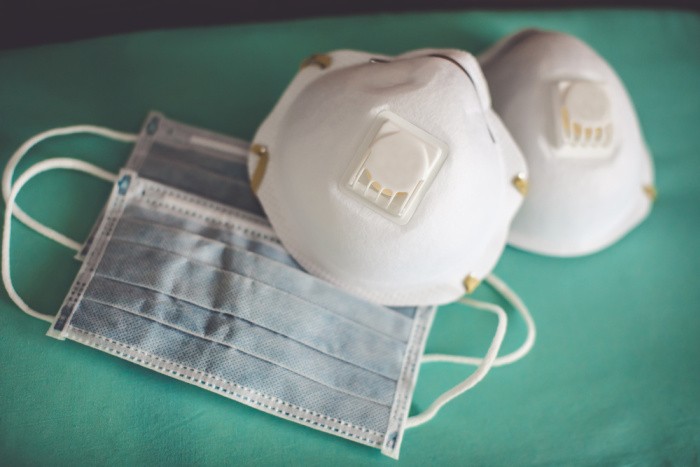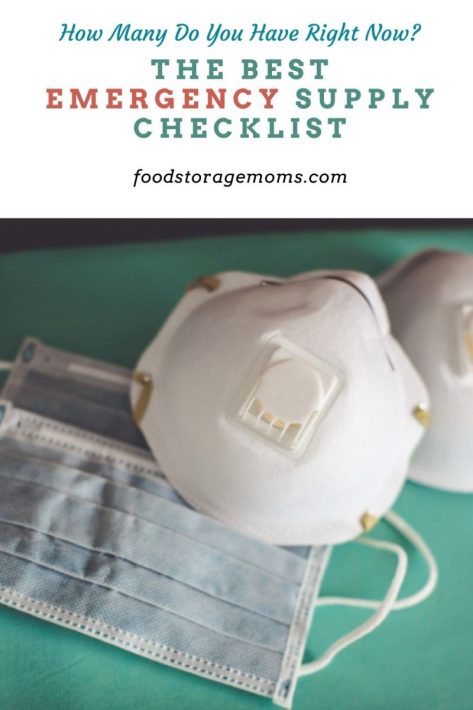
Being prepared for almost any emergency that comes your way can be a real challenge. In my posts over the years, I’ve always stressed the need to acquire, store, and know how to use those critical items to ensure your safety and comfort when an emergency happens to you and your family. I’ve compiled the best emergency supply checklist so you can start your preparedness journey.
A reliable checklist should include those preparedness items that will make a difference when an emergency happens. That being said, the checklist could prove intimidating if you are just getting started, and it could also be so long that you wonder where to start.
My approach today is to start simple and compile a checklist that will hopefully get you and your family through the first few days when a natural disaster turns your life upside down. It isn’t designed to address the long-term needs of your family if a significant emergency event is what you’re facing.
The best preparedness supply checklist we discuss today could be used when you face a power outage, accidents in the home, severe weather conditions, and a range of natural disasters that may be frequent where you live.
In case you missed this post, 15 Emergency Numbers You Need or this post, 30 Items You Need To Survive A Pandemic

The Best Emergency Supply Checklist
This list isn’t compiled with any particular priority sequence, although I put a few of the most critical items at the top. Let’s get started.
Every Emergency Inventory Should Include Food and Water
The key to surviving any emergency is having the essential items that keep us alive daily. That would certainly include food and water. Maintaining the energy you need to perform any task requires you to stay sufficiently fed.
It doesn’t have to be extravagant, so it provides the nutrients and protein to sustain your daily activities.
We can go without food for a more extended period than water. Water and proper hydration are critical to survival in any situation.
As you plan your preparedness inventory, remember that all those dehydrated foods you bring home for storage and use will need water for their consumption.
Freeze-dried foods are easier to eat without water being added, but if you want your body to function as needed, all your bodily systems will need water.
A First Aid Kit Will Help You Face Emergencies with Confidence
Hopefully, your family will face an emergency that doesn’t necessarily pose significant bodily harm. If it is a major disaster, there could be times you’ll need to transport a family member to professionals for treatment if you can safely get there.
In most cases, having a fully stocked first aid kit will be sufficient to deal with cuts, burns, scratches, and maybe even a broken bone until the event passes, and you can get help if needed.
It is also essential to have sufficient training to know when first aid is needed and how best to administer it.
- First Aid Kits-What You Need To Survive
- What’s In Your First Aid Kit?
- Uncommon First Aid Items We Should All Have
Light and Power Sources Keep You Safer and more Informed
I recently wrote a post about best dealing with a power outage. Often, during an emergency, thousands of homes lose power. It’s essential to be able to see and get around. Flashlights and Lanterns
If your flashlights need batteries, have extra, just in case. I like solar flashlights and lanterns, so I don’t have to worry if my batteries are fresh.
If you have a backup power source, whether a generator or solar power unit, you can run radios, TVs, CPAP, and other things that will make your home more functional and safe.
Another item to help you stay informed is a hand-crank radio. I bought one of these, which also has a weather radio. I feel peaceful whenever I see this radio on the shelf since I know I can “crank” it up and listen to the weather and other news reports. NOAA Radio.
Everyone likes knowing what’s happening outside their home, in the neighborhood, and throughout the area. Many radios come equipped with lights and USB ports, too.
I don’t usually suggest people rely on candles during an emergency due to the possible fire danger. I’ve recently learned that if you put your candles in a thick mason jar or on a wide-based plate, you should be ok if you keep them away from flammable things like curtains.
They also provide a little warmth for your hands and feet if needed.
I’ve also heard that some people swear by their use of glow sticks. They feel the glow sticks have proven to be long-lasting and appreciate that they are battery-free and safer than candles.
You May Need to Make Noise to Get People’s Attention
How quickly you respond to the situation during an emergency could be critical to survival. A whistle or horn to wake up family members promptly could make a real difference.
Also, you may need to alert others outside your home that you are inside and need help. There could be a situation in which you are trying to find a family member or neighbor, and using a whistle or horn would prompt them to yell out in response. I have several sets of these, Emergency Whistles.
Having Various Types of Gloves Could Prove Helpful
Emergencies can take lots of forms. Your house could be flooded, and you’ll need to bail out the water and shovel the mud. Picture how your hands will feel after that effort if you don’t wear quality work gloves.
You could also face a terrific snowstorm and need to clear your driveway, porch, or roof. Without warm winter gloves, those tasks would be miserable and unsafe as frostbite could set in.
Another handy item to have in your supply is hand warmers. Again, protecting your hands and fingers from damage caused by cold is essential. HandWarmers
Have Supplies that Provide Some Sanitation Coverage
Over the past few years, we’ve all learned the value of wet wipes and hand sanitizer. Early on, there was a shortage of these things as hordes of people charged to Costco and other stores to get products that provided some protection.
Besides keeping various parts of our body cleaner, wet wipes can be used to clean countertops, sinks, and other areas of our bathroom and kitchen.
If the water is shut off, we must keep our hands clean. Hand sanitizer is effective when used consistently and often. You may want to add adult diapers or disposable underwear to your stash; someone in your family may need it. Why You Should Make Your Hand Sanitizer + DIY Recipe
Tissues Are for More Than Blowing Your Nose
We are all used to reaching for a soft tissue when we feel a cough or sneeze coming. They have been everyone’s favorites for years.
Sometimes, we forget that they can also be used to wipe up small spills, used like gauze to stop bleeding, wadded up in a small ball to stuff in our ears when they ache or we need to dampen sound, and much more.
It’s great that they come in box form, making them easy to stack and store. The box also helps to keep them more sanitary, even after they’ve been opened.
Who Doesn’t Love Duct Tape?
One of our daughters had a father-in-law who swore by duct tape. He used it to fix so many broken or damaged items.
Our family has always had duct tape around the house, but we haven’t become that attached. It is a handy tool to temporarily fix various things around the house, but I wouldn’t use it as a “permanent” solution. Gorilla Tape
Duct Tape: Why You Need to Store It
Extra Blankets are a Must-Have Supply Item
We’ve found having extra blankets available to be a wise decision in many situations. They not only help keep you warm when the weather turns cold each year, but they can also cover windows, act as insulation under doorways, help raise your feet and legs if they get injured, help support your neck or back, and much more.
Some people have found that emergency blankets with their heat-reflecting foil are a Godsend. You’ve seen these on the news being put to use in shelters. I don’t own any, but I need to check them out. I have these: Swiss Safe Emergency Mylar Thermal Blankets
Masks of all Types are Must-Haves
During an emergency, we face the additional concern of dust and smoke in the air.
Not all masks help in these situations, particularly with the smoke. Please do your research, but I feel we should all have an inventory of N95 masks that seem to be the most efficient at a reasonable cost.
Having the Right Tools Available Is a Critical Need
Mark has had a large tool chest in the garage for years. It’s his go-to support item due to the inventory of screwdrivers, pliers, hammers, drills, bits, etc. In an emergency, a functional item called a multi-tool would sure be a handy thing to have.
Good ones are almost like having a well-stocked toolbox all in one. They are so small you can put them in with your other supply items and not feel guilty about taking up space.
You may also want to have an all-purpose bag close by. It could be like a duffle bag, gym bag, diaper bag, or another style as long as it has strong handles and can carry a fair amount of weight.
You can use the bag to carry most, if not all, of the items we’ve discussed today. Store it where it will be handy to grab and go if you need to evacuate quickly.
Final Word
I’ve tried to help by discussing the best preparedness supply checklist for you. We can all use some help to get organized, but having the proper supply of needed items in an emergency is particularly important.
You may have other items you feel should be included, so please share those with my readers in the comments below. We all can help assist others as we work together to make the world a safe and well-prepared. May God bless this world. Linda
Copyright Images: N95 Masks Depositphotos_362371406_S
The post The Best Emergency Supply Checklist appeared first on Food Storage Moms.
from Food Storage Moms
No comments:
Post a Comment